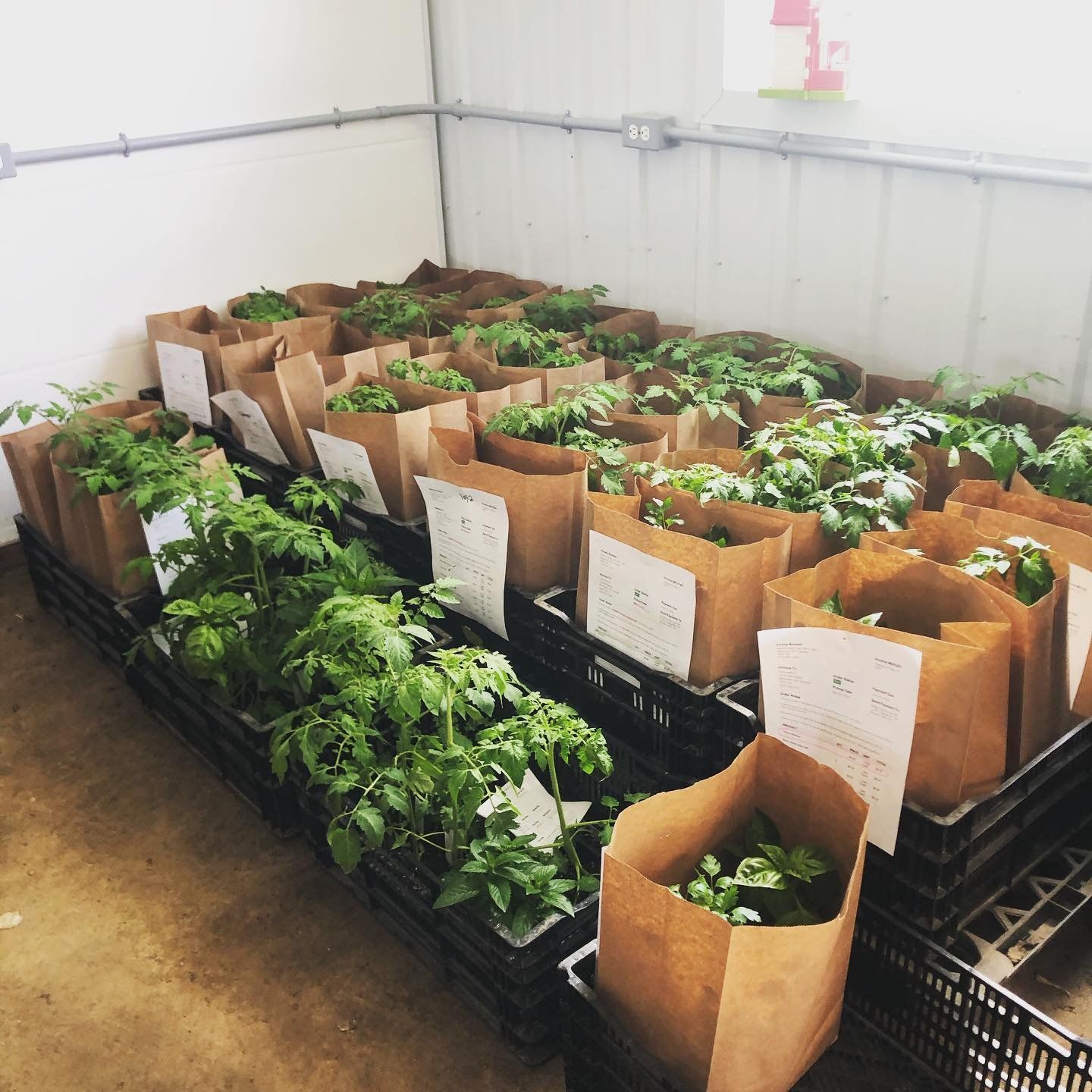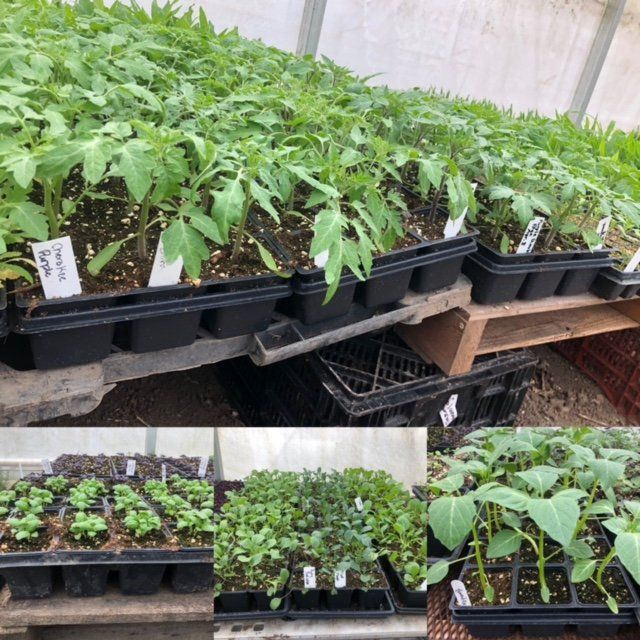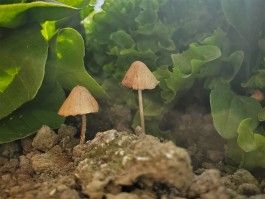May 20, 2021
The Lettuce Rejoice!
Firmly Rooted Farm's Newsletter for their Veggie Loving Farm-ily
On the Farm: To Till or Not to Till

The seedling sale inventory has been updated with lots of new plants, you can place your order here:
https://www.harvie.farm/farm/firmly-rooted-farm/shop
Hello All,
You may be interested to learn that the leek moth pheromone traps have attracted some leek moths! Bittersweet news, but we are not caught off guard. Each week for several weeks, we will be distributing the eggs of the parasitic wasp that preys on the leek moth. We receive Trichogramma brassicae in the egg stage to ensure they remain alive during transport. They will begin to hatch, transform into adults, and deposit their eggs in the eggs of the leek moth, preventing the moth from becoming established. Insidious and effective.
I hope everyone is keeping well and enjoying the spring weather! We just spent a beautiful day hanging and organizing trellising for the tomatoes, cucumbers, and peppers. After the cold snap, the sun felt glorious, and the greenhouses are flourishing beautiful little biomes. Before we know it, we will be swimming in hot crops.
As we transition our greenhouses to hot crops, and cover cropped fields to other veggies, we are increasingly exercising techniques that reduce our impact on the environment. One goal of the farm is to reduce tillage and adopt low to no-till methods of bed preparation. Inspiration came during an EFAO conference a couple of years ago, which explored the regenerative effects of reduced tillage on the soil. If one limits disturbance, keeps as much living material in the soil as possible and keeps as much cover on the soil as possible, one is working to build soil biology and health. By keeping the microorganisms such as mycorrhizal fungi intact, it allows them to flourish. Low disturbance in the soil also maintains the networks built by worms, which naturally aerate the soil to allow water and air to infiltrate, reaching plant roots. Living material in the soil provides a food source for beneficial microorganisms, some of which exist in a symbiotic relationship with plants, either by synthesizing nutrients or acting as predators for pests. Keeping cover on the soil helps reduce erosion, and improves water and weed management. Together, these principles of reduced tillage farming also draw carbon from the atmosphere, depositing it in the soil. By increasing organic matter, we are increasing available nutrients for plants, but also assisting in the fight against climate change. In the feature photo for this week, you will see some small mushrooms among the lettuce, evidence that the mycorrhizal network is kept intact.
How do we reduce tillage? There are a few ways we achieve this. We use silage tarps to terminate crops when possible, utilizing solarization instead of rototilling or plowing harvested fields. We also use an attachment called a power harrow, which works only the top couple inches of the soil, allowing the soil underneath to remain intact. We also broad-fork, which is an important step. A broad fork is literally a human-sized fork, inserted in the ground to pry the soil apart and provide aeration. This year we will also begin compost mulching with high carbon compost. This will allow us to plant right into the mulch and will increase the carbon content of the soil.
In the short term, these techniques can be more laborious, but over time improve soil health, eventually resulting in soil that is easier to work and doesn’t require steps such as broad forking. Plus, farming with reduced-tillage is about more than the labour or the cost of the method, it’s about improving the way we interact with our environment. A farm is a living ecosystem, we are stewards of this land, and we graciously accept that role with all the responsibility it holds.
Kitchen Corner

Rhubarb is just getting started, but we will have more coming soon. I decided a rhubarb cranachan would be a good recipe to share. This easy dessert is traditionally made with raspberries, but since it is served as a celebration of the harvest, any fruit can be substituted. To make it non-alcoholic, try a little orange juice or vanilla extract. I also enjoy rhubarb lightly pickled as an addition to salads! I haven’t tried it fermented yet, but maybe that’s an experiment for this spring.
Kitchen Clean-Up
The seedling sale inventory has been updated with lots of new plants, you can place your order here:
https://www.harvie.farm/farm/firmly-rooted-farm/shop
Seedlings ordered this week will be available for pick up the week of May 27th and 28th.
That’s all for now folks, happy eating until next time!
Farmer Erika




